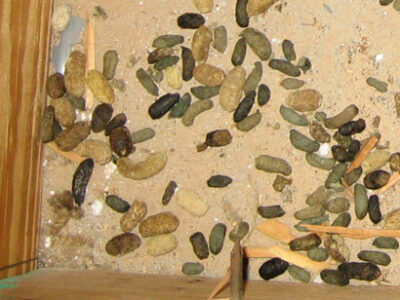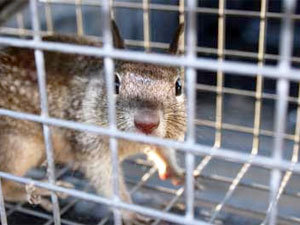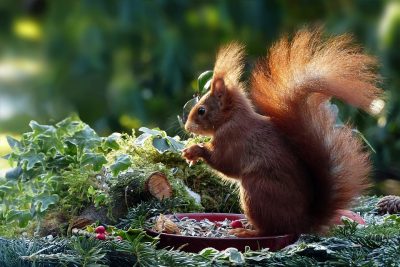Squirrels and rats are common pests that can infest homes and properties worldwide, causing damage and leaving behind potentially harmful droppings. Identifying whether you’re dealing with squirrel poop vs rat poop is crucial for effective pest control and proper cleanup. This guide will help you recognize the differences between these rodents’ droppings and provide tips for identifying which creature has invaded your space.
Squirrel Poop Vs. Rat Poop: Key Differences

| Characteristic | Squirrel Droppings | Rat Droppings |
|---|---|---|
| Shape | Oblong pellets with rounded ends | Oblong pellets with tapered ends |
| Texture | Smooth and barrel-shaped | Raisin-like, uneven texture |
| Color | Dark when fresh, lighten to brown or white when dry | Dark when fresh, remain dark when dry |
| Size | Approximately ⅜-inch long, ⅛-inch diameter | ½-inch to ¾-inch long, ¼-inch diameter |
| Amount | Less than 12 pellets per defecation | 40-50 droppings daily |
| Distribution | Small piles in specific areas | Scattered trails along travel paths |
| Common Locations | Attics, chimneys, garages, around tree trunks | Basements, attics, along baseboards, behind appliances |
Understanding these differences is essential for identifying which pest has invaded your space. Below, we’ll explore these characteristics in more detail and provide additional methods to determine whether squirrels or rats are present in your home.
Both squirrel and rat droppings can carry harmful bacteria and diseases including salmonella and leptospirosis. Rat droppings may also contain hantavirus, which can cause severe respiratory illness. Always use proper protection when cleaning rodent droppings.
Never vacuum or sweep rodent droppings! This can disperse disease-causing particles into the air. Instead, spray the area with disinfectant, wait 5 minutes, then use gloves and paper towels to clean up.
Detailed Comparison of Squirrel and Rat Droppings
While squirrel and rat droppings may appear similar at first glance, there are several distinguishing characteristics that can help you identify which pest you’re dealing with.
Similarities Between Squirrel and Rat Droppings
- General Shape: Both are cylindrical and oblong
- Fresh Appearance: Both appear shiny and dark when fresh
- Location: Both can be found in attics and yard areas
- Health Risks: Both carry potentially harmful bacteria and pathogens
Key Differences in Appearance

- End Shape: Rounded at both ends
- Texture: Smoother, barrel-shaped pellets
- Color Change: Lighten to brown or white as they dry
- Size: Slightly smaller (⅜-inch long)

- End Shape: Tapered, sometimes with hair-like protrusions
- Texture: Resembles raisins with uneven surface
- Color Change: Remain dark even when dry
- Size: Larger (½-inch to ¾-inch long)
Distribution Patterns
One of the most reliable ways to distinguish between squirrel and rat droppings is to observe how they’re distributed:
Squirrels tend to defecate in specific locations, creating small piles of fewer than 12 pellets at a time. Over time, these piles may grow as squirrels return to the same location. You’ll typically find these piles in attics, around tree trunks, or other places where squirrels spend significant time.
Rats defecate while they walk, leaving scattered trails of droppings along their travel paths. A single rat can produce 40-50 droppings daily, creating the impression of a larger infestation. Look for these trails along baseboards, behind appliances, and other areas where rats commonly travel.
Other Signs to Help Identify Squirrel or Rat Presence

If you’re still unsure which rodent is responsible for the droppings in your home, look for these additional identification clues:
1. Nesting Materials and Locations
| Squirrel Nests | Rat Nests |
|---|---|
| Built in attics, roof gaps, and walls | Found in wall voids, attics, and basements |
| Use insulation and natural materials | Prefer shredded artificial materials (cardboard, insulation) |
| Typically 6-8 inches in diameter | Usually 4-6 inches in diameter |
| More organized construction | Loosely woven, less structured |
2. Activity Patterns
The time of day when you hear scurrying or scratching sounds can help identify the culprit. Squirrels are primarily active during daylight hours, while rats are mostly nocturnal.
- Squirrels: Diurnal (active during daylight), especially in early morning and late afternoon
- Rats: Nocturnal (active at night), though they may adapt to human schedules in urban environments
3. Tracks and Movement Patterns
If you can find tracks in dust, mud, or snow, they can provide valuable clues:
- Squirrel Tracks: Bound and leap, leaving inconsistent gaps between prints. Back feet are larger than front feet, and tracks often appear side-by-side as they jump.
- Rat Tracks: Move in a linear fashion, often with visible tail drag marks between footprints. Tend to travel along walls due to poor eyesight, leaving greasy marks from their fur.
4. Damage Patterns
Both rodents are known for causing property damage, but their patterns differ:
- Large, clean gnaw marks
- Chew marks on exterior to gain entry
- Damage concentrated in attic areas
- May target tree bark and garden plants
- Often chew on electrical wires
- Smaller, more numerous gnaw marks
- Enter through existing small holes
- Damage throughout structure, especially near food
- Gnaw marks on food packaging
- Tunnels in insulation
Similar Droppings from Other Animals
Sometimes what appears to be squirrel or rat droppings may come from other animals. Here are some other possibilities to consider:
| Animal | Droppings Characteristics |
|---|---|
| Bat | Small, dark pellets that crumble easily when dry; typically found in piles beneath roosting spots |
| Mouse | Similar to rat droppings but much smaller (⅛-inch to ¼-inch); pointed ends |
| Raccoon | Larger (2-3 inches), tubular droppings; often found in communal “latrines” or on horizontal surfaces |
| Chipmunk | Very similar to squirrel droppings but smaller; typically found outdoors near burrow entrances |
Safe Cleanup and Control Methods
Never handle rodent droppings with bare hands or create dust by sweeping or vacuuming. These actions can increase your risk of exposure to harmful pathogens.
Safe Cleanup Procedure
- Ventilate the area by opening windows for at least 30 minutes before cleaning
- Wear disposable gloves, a mask, and protective eyewear
- Spray the droppings with a disinfectant or a mixture of 1 part bleach to 10 parts water
- Let the solution soak for 5 minutes
- Use paper towels to pick up the droppings and place them in a sealed plastic bag
- Clean and disinfect the entire area afterward
- Wash hands thoroughly after removing gloves
Control and Prevention
After identifying whether you have squirrels or rats, take appropriate measures to control and prevent further infestation:
- Seal Entry Points: Inspect your home for any openings and seal them with appropriate materials (steel wool, hardware cloth, caulk)
- Remove Food Sources: Store food in airtight containers and clean up crumbs and spills promptly
- Trim Trees: Keep branches at least 8-10 feet away from your roof to prevent squirrel access
- Set Traps: Use appropriate traps for the identified pest in areas with high activity
- Professional Help: Consider calling a pest control professional for severe infestations
Frequently Asked Questions
Can I get sick from cleaning up rodent droppings?
Yes. Both squirrel and rat droppings can carry diseases such as salmonella, leptospirosis, and hantavirus. Always use protective gear and proper cleaning methods to minimize risk.
How long do rodent droppings remain infectious?
Viruses and bacteria in rodent droppings can remain infectious for a week or longer, depending on environmental conditions. Always treat any rodent droppings as potentially infectious regardless of age.
What’s the fastest way to tell squirrel and rat droppings apart?
Look at the color of dried droppings. Squirrel droppings typically lighten to brown or white as they dry, while rat droppings remain dark. Also, check the distribution pattern—squirrels leave piles while rats leave scattered trails.
Should I use a professional service to clean up rodent droppings?
For large infestations or if you have respiratory issues, hiring professionals is recommended. They have proper equipment and training to safely remove droppings and disinfect the area.
Conclusion
Identifying whether you’re dealing with squirrel poop or rat poop is crucial for effective pest control. The key differences lie in the shape, color when dry, amount, and distribution patterns:
- Squirrel droppings are pellet-shaped with rounded ends that lighten in color as they dry, typically found in small piles.
- Rat droppings have tapered ends resembling raisins, remain dark when dry, and are scattered in trails along travel paths.
Additional clues such as nesting materials, activity patterns, and damage can help confirm which rodent is present. Remember that all rodent droppings pose potential health risks, so use appropriate safety measures when cleaning them up.
By correctly identifying the pest, you can implement targeted control strategies to eliminate the current infestation and prevent future problems.



